Seven S
Senior Cook
Every latin american country has their own version of tamales, but this is how it is made in Panama...
Tamal Panameño
(Yields approximately 25-30 Tamales)
-1 Hen, 5 lbs, chopped up
-2 lbs, “maiz pilado” (crushed corn kernels)
-Banana/plantain leaves
-Marinade: chopped garlic, onion, culantro, celery, soy sauce, salt and pepper
-Sofrito: chopped garlic, green/red chili peppers, garlic cloves, onions, celery, chopped tomatoes, culantro, parsley leaves and stems
-Creole Sauce: 1 small can of tomato paste, ¼ of the above sofrito
-Filling: masa, deboned chicken, green peas, capers, olives, raisins, creole sauce
- Cut hen into 8 pieces and marinate overnight in chopped garlic, onion, culantro, celery, soy sauce, salt and pepper.
- Bring hen with all marinating ingredients, cold water, and two large chicken bouillon cubes to a simmer. There should be enough water to generously cover the hen pieces. Simmer until the hen is tender, may take around an hour and a half.
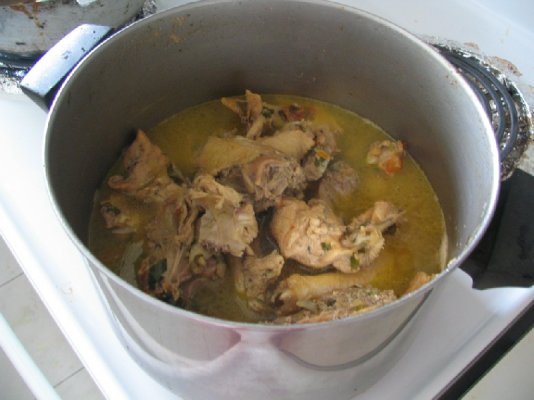
- Boil the “maiz pilado” in substantial amount of water, at a furious boil, adding more water as needed. Boil until the maiz is tender and can easily be crushed between your fingers when squeezed. May take around one hour and forty-five minutes. Drain in a colander, discarding the water.
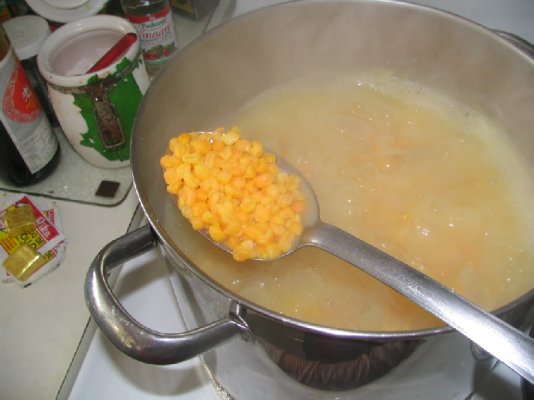
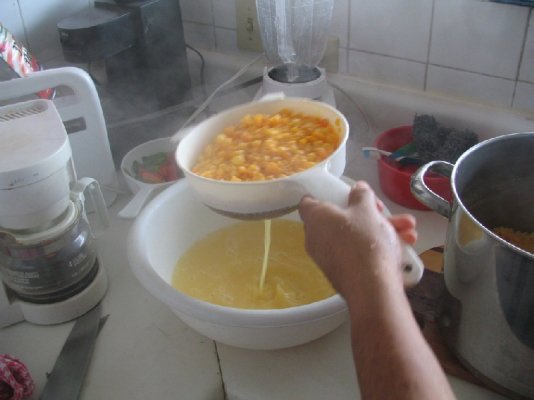
- The strained corn is now run thru a grinder rendering a moist, dough-like masa not unlike a thick polenta. Set this masa aside.
-
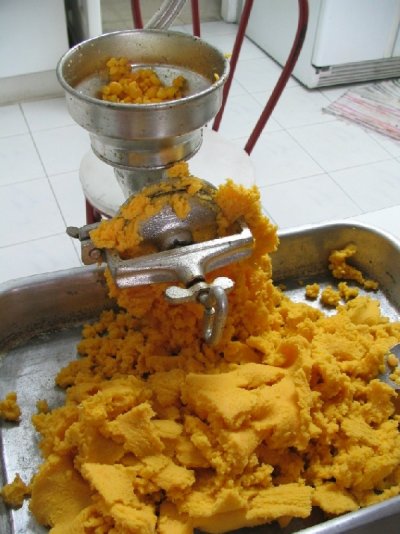
- Lightly rinse the plantain leaves and then drop into simmering water until pliable, should take only a minute. Remove from hot water and set aside.
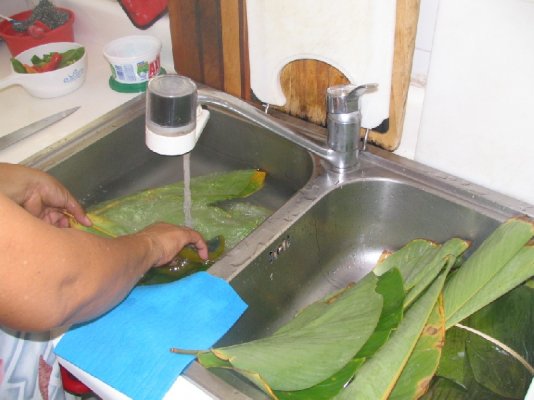
- Remove hen from broth and set aside to cool. When the hen is cool, debone and save the meat, discarding the bones.
- Heavily season the remaining broth with salt as this will provide the seasoning for the corn masa (dough) – do not be worried that it may be too salty, the dough when combined will make it somewhat bland. You should have approximately 5 cups of flavorful broth.
- Heat three tablespoons of vegetable oil over medium-high heat and add the annatto seeds. Allow the oil to become colored deep red, about 30 seconds, remove from heat. When oil is cooled, strain the seeds and add the red oil to the chicken broth and stir in.
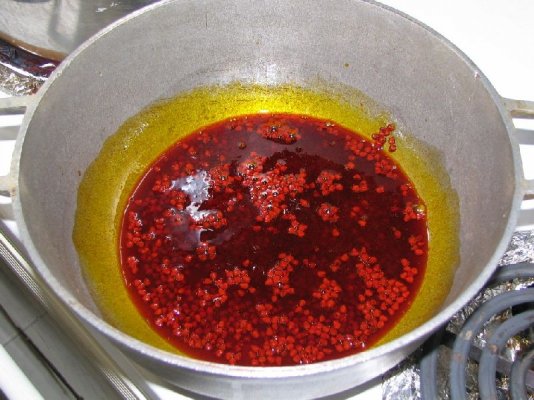
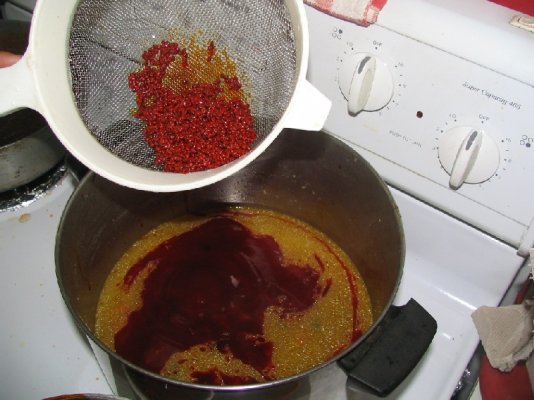
- Take some chopped garlic, green/red chili peppers, garlic cloves, onions, celery, chopped tomatoes, culantro, parsley leaves and stems and add to a blender with approximately two cups of water. Blend until uniform. Set aside this sofrito mixture.
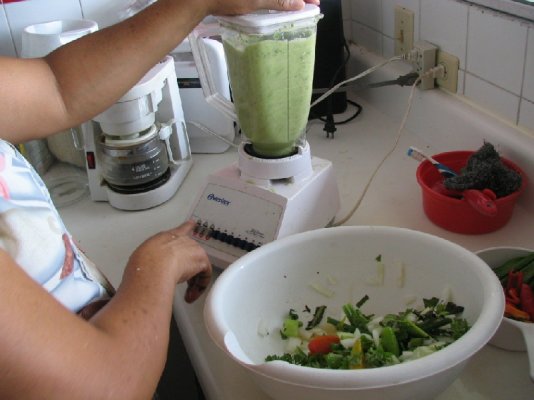
- In a one tablespoon oil, saute one small can of tomato paste and then add ¾ of the sofrito mix. Bring to simmer and allow to reduce until thick and uniform. Add one bouillon cube, hot sauce and salt to taste. Set aside this creole sauce.
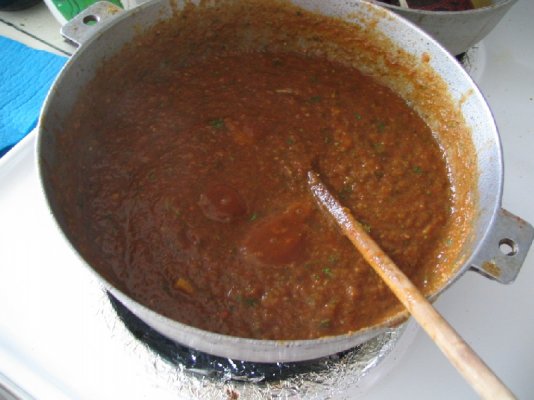
- Incorporate the reddish chicken broth into the corn masa with the hands, a cup at a time. Also add in the remaining ¼ of the sofrito mix. Keep working in the liquid, squeezing the masa through your fingers until the entire dough takes on a deep orangelike color and it is entirely free of lumps. Taste to ensure there is some light saltiness and tastes great – the masa itself should have flavor. The dough should be creamy and relatively lump-free. You may have to use all 5 cups of the broth.
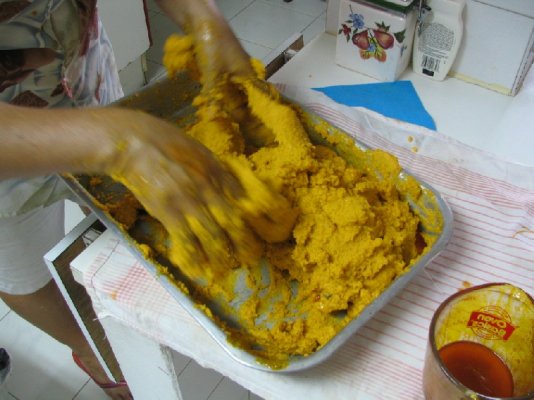
- Place a large spoonful of the masa unto the steamed banana/plantain leaves and spread. In the center, add some deboned chicken pieces, then some green peas, capers, olives, raisins and top off with a spoonful of the creole sauce. Gather the masa around the sides somewhat concealing the inside. Then fold the banana leaf into a little pouch. Place this pouch into a larger banana/plantain leaf, wrap once again and tie with butcher’s twine.
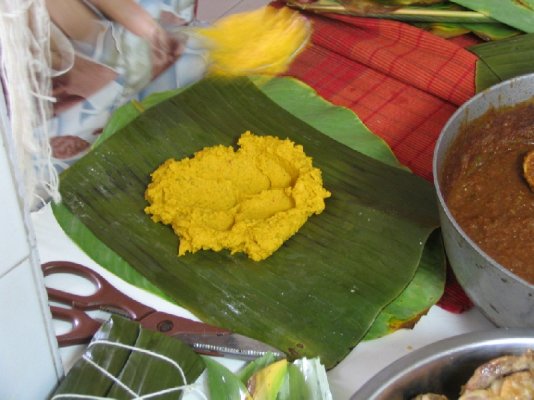
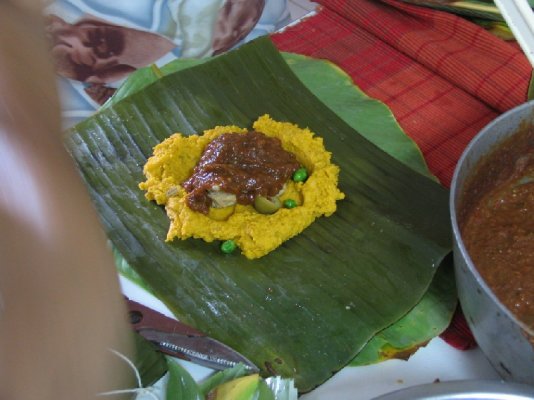
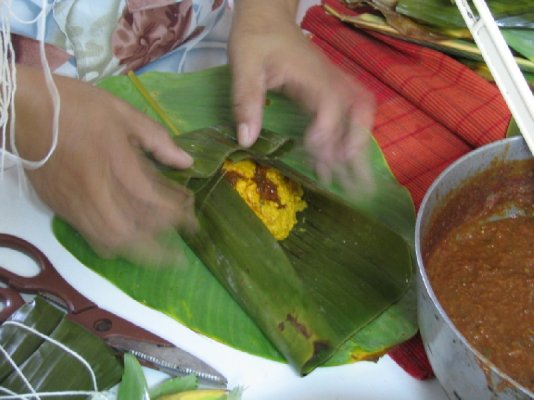
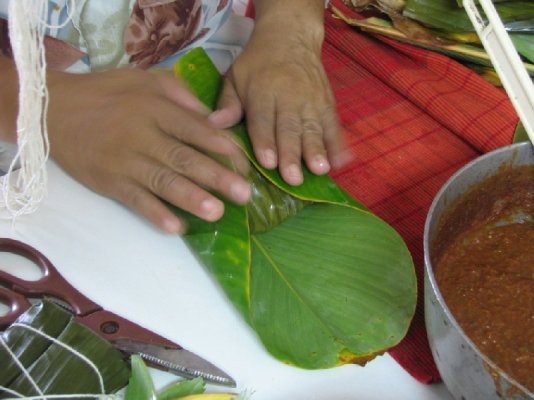
- These pouches can now be simmered in water for 45 minutes. Allow to cool ten minutes before unwrapping and eating. Once cool, they can also be frozen to be eaten at a later time, just throw into a pot of boiling water until heated through.
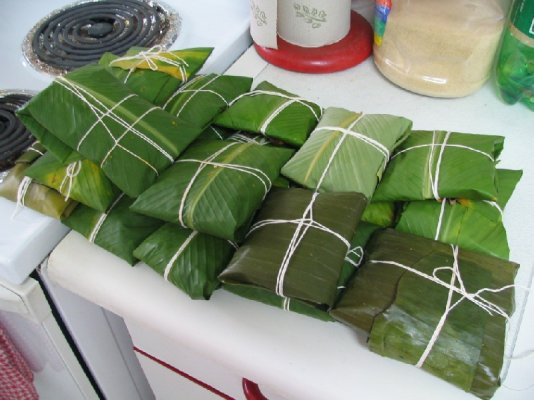
Last edited:

